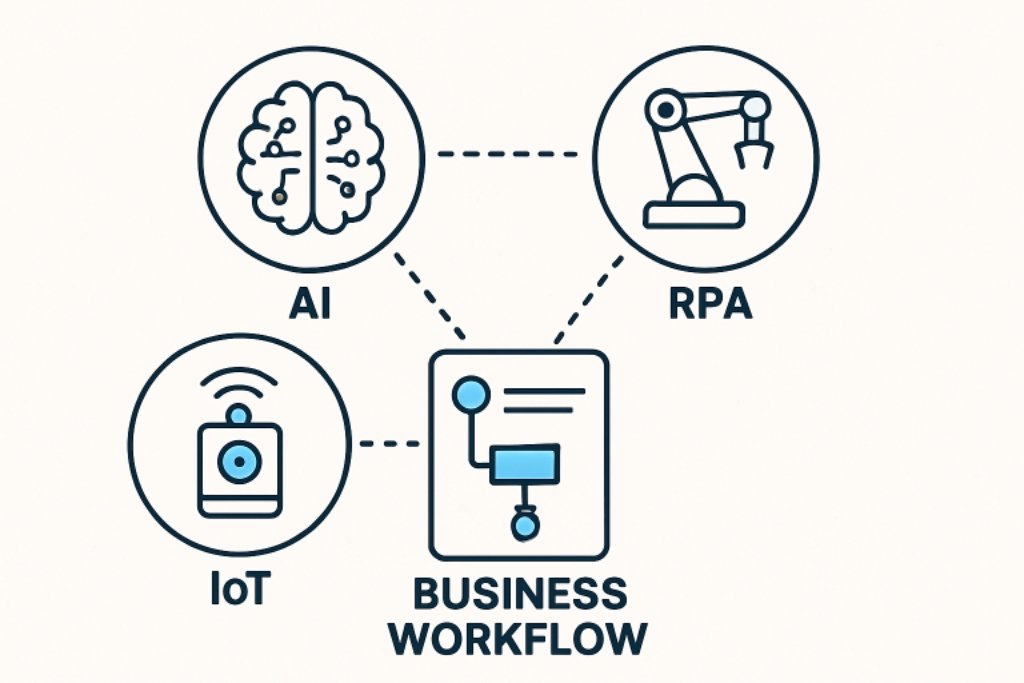Modern organizations are undergoing tremendous transformation as technological innovation reshapes how we approach efficiency and productivity. The introduction of tools like artificial intelligence (AI), robotic process automation (RPA), and the Internet of Things (IoT) is driving a new standard for business processes and operational excellence. Companies looking to retain their competitive edge must be ready to adapt, integrating solutions that deliver reliable and scalable returns. Forward-thinking partners like Arctic IT help organizations embrace and implement these breakthrough technologies, setting the stage for smarter, more agile workflows that capitalize on data-driven insights.
These technologies underpin a sweeping evolution, from automating repetitive data entry tasks to leveraging real-time sensor data for instant supply chain decisions. Industries now benefit from streamlined communications, heightened security, and enhanced collaboration, with leadership increasingly seeking technology as a strategic pillar rather than just a tactical enhancement. As businesses strive for higher efficiency, the ability to analyze large data sets, reduce manual intervention, and make more informed decisions becomes essential.
Efficiency gains are not limited to large corporations—small and mid-sized enterprises (SMEs) also experience significant improvements in cost control, risk mitigation, and customer engagement thanks to advanced technologies. The potential impact is substantial whether AI assists in resource allocation or IoT devices enable predictive maintenance. This digital transformation enables businesses to operate seamlessly at scale.
As we navigate this evolving landscape, leaders need to understand the specific technologies shaping the future of work and how to adopt them strategically. Each advance—from AI-driven automation to decentralized trust enabled by blockchain—presents unique opportunities and requires careful consideration for optimal integration and results.
Artificial Intelligence in Workflows
Artificial intelligence stands at the forefront of workflow transformation, integrating sophisticated algorithms and machine learning at nearly every stage of modern business processes. With the ability to rapidly process vast amounts of data, AI technologies automate scheduling, reporting, and even decision-making tasks. For example, healthcare organizations use AI-powered tools to enable automated medical records processing, freeing providers to focus on patient care and significantly reducing administrative burden.
Similarly, financial firms adopt AI-powered predictive analytics to assess risk and uncover growth opportunities. Automating transaction reviews and fraud detection improves workflow speed and accuracy. The potential for AI to drive productivity extends to every industry, as intelligent systems continue to evolve and learn from historical data while providing actionable recommendations.
Robotic Process Automation (RPA)
Robotic Process Automation (RPA) addresses one of the most persistent productivity challenges: repetitive, manual processes that drain valuable human resources. Companies can improve quality and output by deploying software bots to handle data entry, invoice management, claims processing, and other rules-based tasks. RPA is streamlining workflows in the manufacturing sector by automating inventory management, procurement, and order processing, providing staff with more time to tackle strategic initiatives.
These cost-effective solutions reduce human error and ensure consistency and compliance, helping organizations grow without proportionally increasing overhead. RPA adoption continues to accelerate, with many businesses recognizing a fast return on investment as routine tasks are delegated to intelligent automation.
Internet of Things (IoT)
The Internet of Things bridges the digital and physical worlds, using interconnected sensors and smart devices to monitor, track, and manage workflows remotely. Real-time data from IoT devices empowers organizations to optimize resource usage, track fleet movements, and maintain equipment health proactively. In logistics, for instance, IoT sensors monitor shipment location, temperature, and humidity, alerting managers to potential issues before they escalate—this leads to fewer delays and improved customer satisfaction.
Smart buildings and factories also utilize IoT to automate energy use, monitor asset utilization, and detect maintenance needs, ensuring that resources are allocated efficiently. By enhancing operational transparency, IoT solutions help leaders make data-driven decisions that save time and boost productivity.
Blockchain Technology
Blockchain technology delivers decentralized, tamper-proof transaction recording, drastically improving workflow security and transparency. The finance sector is one of the earliest adopters, using blockchain to facilitate rapid, secure cross-border payments while minimizing the need for traditional intermediaries. Smart contracts automate verification and execution, saving time and reducing the risk of disputes and errors.
Beyond finance, industries such as supply chain management embrace blockchain to trace goods from origin to destination in real time. Verified, immutable records help eliminate fraud and boost stakeholder trust, granting organizations unprecedented control and visibility over multi-party transactions.
Augmented and Virtual Reality
Augmented Reality (AR) and Virtual Reality (VR) are changing the training, collaboration, and asset management landscapes. In complex manufacturing settings, technicians equipped with AR headsets receive real-time guidance, overlaying instructions on live equipment to minimize guesswork and errors while shortening learning curves. VR helps organizations design immersive training modules for high-risk scenarios or product demonstrations, reducing the expense and complexity of physical prototypes.
AR and VR foster safer, more engaging, and effective learning experiences, supporting businesses as they upskill their workforce and fine-tune their operational procedures. These capabilities are becoming central to companies looking to stay agile and competitive in a digitally connected world.
Case Studies
Numerous organizations are experiencing firsthand how adopting these technologies drives tangible improvements. A primary healthcare provider implemented AI-driven analytics to map workflow inefficiencies, achieving a 20% increase in overall operational efficiency. Another notable example is a manufacturing company that integrated RPA for its invoicing systems, which resulted in a 30% reduction in invoicing errors and a 50% acceleration in processing time.
Similarly, global logistics firms deploying IoT-enabled tracking platforms have minimized shipment loss, and retailers using blockchain technology now offer customers transparent, end-to-end product traceability. The widespread adoption of AR and VR in talent training has allowed companies to safely and rapidly grow employee skills in virtual environments.
Conclusion
Integrating transformative technologies—including AI, RPA, IoT, Blockchain, and AR/VR—has become an operational imperative for businesses determined to thrive in the digital era. These innovations offer more than incremental improvements; they deliver lasting, strategic value by automating manual processes, enhancing accuracy, and empowering employees with actionable insights. Proactive adoption positions organizations to outperform peers and remain relevant in an ever-evolving competitive landscape.

